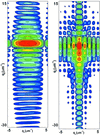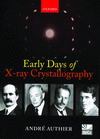issue contents
January 2014 issue

Cover illustration: Atomic pair distribution function (PDF) analysis is having a major impact on the study of atomic correlations and local structure in nanomaterials. The methodology is extended to short-range magnetic correlations through the magnetic pair distribution function (mPDF) in the article by Frandsen et al. [Acta Cryst. (2014), A70, 3-11]. This will give new insight into magnetic correlations in nanomaterials and short-range-ordered magnetism in bulk materials, such as the spin-density wave shown here with its mPDF superimposed.
advances
scientific commentaries

research papers
foundations
research papers


book reviews



 journal menu
journal menu




























